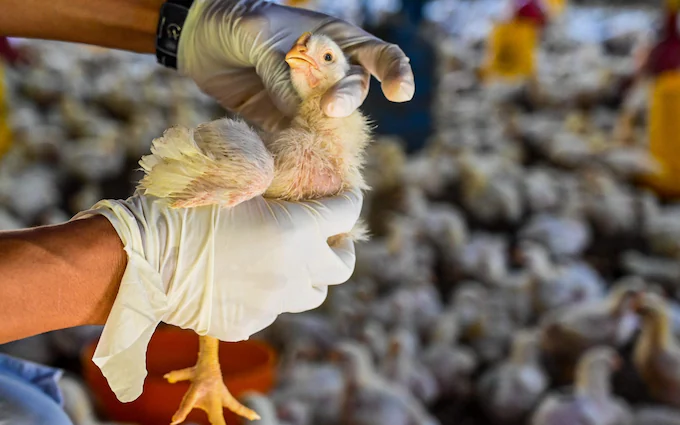
(Reuters) – Public health officials are on high alert due to the rapid spread of avian influenza, also known as bird flu, among dairy cows in the United States this year. Additionally, there have been four confirmed cases among dairy workers in the country.
A highly potent variant of the H5N1 strain has been rapidly spreading across the globe among various animal populations since 2020. This strain has led to devastating outbreaks in commercial poultry and occasional infections in a range of other species, including alpacas and house cats. Until this year, cows had never been infected.
Various strains of bird flu have been detected in humans in Australia and Mexico, with different H5 subtypes also being found in animals and humans worldwide, including in countries like China and Cambodia.
Many of the reported human cases involved contact with poultry, live poultry markets, or dairy cattle before infection. However, there is concern among scientists that the virus may undergo mutations that increase its ability to spread from person to person, potentially leading to a pandemic. According to the World Health Organization, the current risk to individuals is minimal.
Here are various cases of the bird flu virus that have been identified in humans this year.
UNITED STATES: The initial instances of infected dairy cattle were reported in Texas in March, and have since spread to dairy herds in 12 states. According to the U.S. Agriculture Department, tests conducted thus far suggest that the virus found in cows is the identical H5N1 virus that is impacting wild birds and commercial poultry flocks. Four dairy workers who tested positive for the virus this year experienced mild symptoms like conjunctivitis, also known as pink eye.
According to a scientific report by the European Food Safety Agency, the H5N1 virus found in the United States is classified under clade 2.3.4.4b and belongs to genotype B3.13. Interestingly, this genotype has only been detected in North America thus far.
MEXICO: The World Health Organization reported on June 5 that an individual from Mexico has unfortunately passed away due to the first recorded instances of H5N2 avian influenza in humans. The Mexican government attributed the cause of death to chronic illness, rather than bird flu. The individual did not have any documented contact with animals.
AUSTRALIA: On June 7, the World Health Organization announced that a child who had contracted H5N1 bird flu had recently visited Kolkata, India, as reported by Australia. The genetic sequencing revealed that the virus belonged to a subtype of H5N1 and was part of a strain commonly found in Southeast Asia. This particular strain has been previously identified in both human infections and poultry.
Australia is currently facing three separate outbreaks of various strains of the virus on poultry farms. These strains, namely H7N3, H7N8, and H7N9, are believed to have been introduced to the farms by wild birds, according to authorities.
INDIA: In a recent report, the WHO highlighted a concerning case of bird flu infection in a four-year-old child from the eastern Indian state of West Bengal. According to the agency, there has been a second case of H9N2 bird flu infection in humans in India, with the first case occurring in 2019. Although the H9N2 virus usually leads to mild illness, the United Nations agency warned that there could be occasional human cases due to its widespread presence in poultry across various regions.
VIETNAM: In March, a tragic incident occurred in Vietnam where a 21-year-old student lost their life to the H5N1 bird flu. The individual did not have any pre-existing medical conditions, but had come into contact with wild birds while hunting a few weeks before experiencing symptoms. There were no reported instances of coming into contact with deceased or ill poultry at that time.
Vietnam also reported an outbreak of H9N2 in a 37-year-old man, according to EFSA.
CAMBODIA: The Southeast Asia nation and Vietnam’s neighbor has reported five human cases of H5N1 as of June 20.
CHINA: This year, China identified human cases caused by the H5N6, H9N2, and H10N3 strains, including two unfortunate fatalities from H5N6 in the Fujian province. According to EFSA, both of those cases had contact with backyard poultry prior to experiencing symptoms.
This is only the third reported case of H10N3 avian influenza worldwide.
GERMANY: On July 4, the World Organization for Animal Health announced a rare outbreak of highly pathogenic H7N5 bird flu on a farm in western Germany, close to the Netherlands border. This was the initial occurrence of H7N5 on WOAH’s public records.